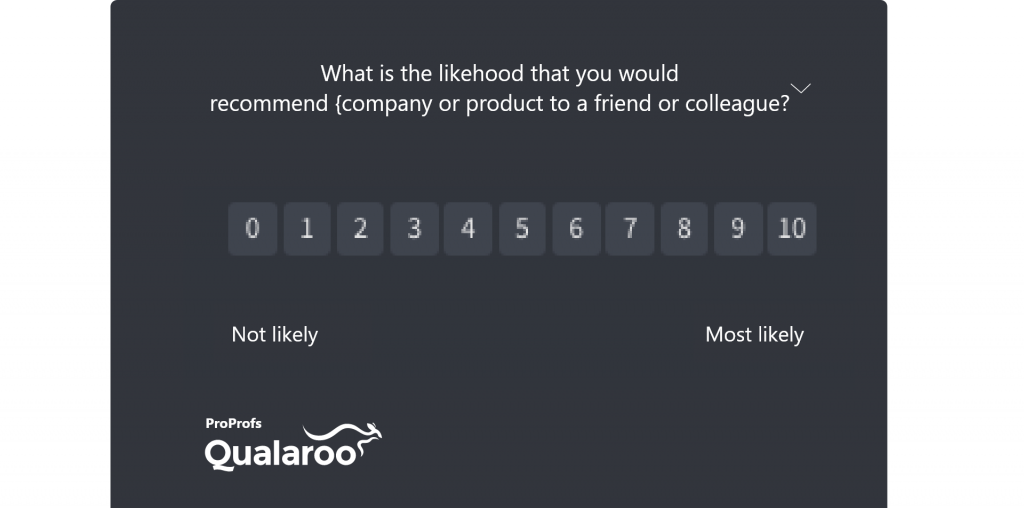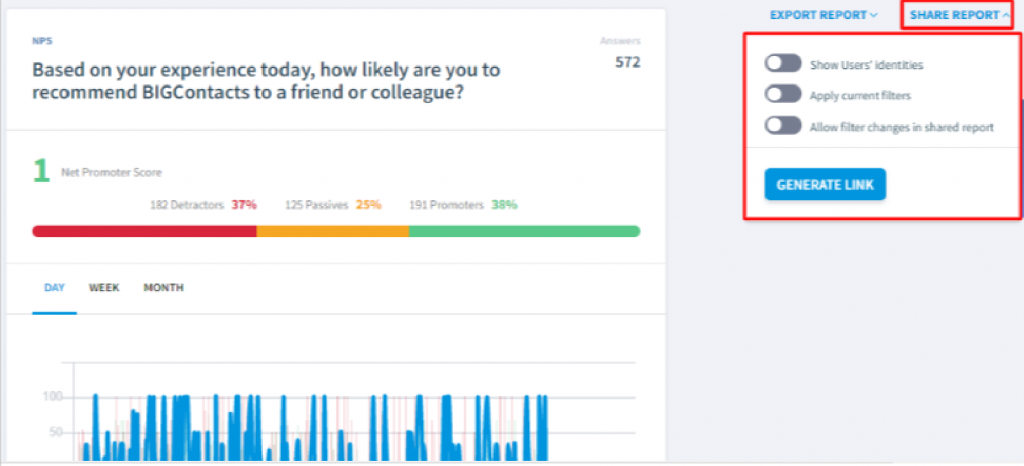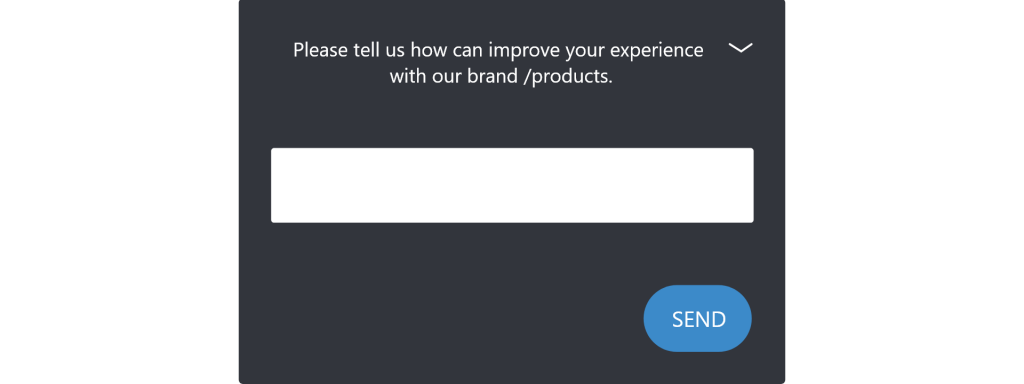So you just ran an NPS survey, and the results are in. There is much data to go through, and you’re wondering where to start.
Here’s step one – divide the respondents into NPS Promoters, Passives, and Detractors.
The most significant aspect of NPS surveys is they let you segregate the respondents into groups of loyal customers and those who may bailout in the future.
But how? And what should you do after you categorize the customers?
That’s what we have for you in the store today.
We’ll delve into the specific use of NPS survey feedback to identify the different types of customers and how to engage them for better ROI.
Let’s go.
How to Identify NPS Passive, Promoter, & Detractor Customers
The standard NPS survey question asks the respondents about the likelihood of users advocating your brand or product to their family and friends. The responses are recorded on a scale of 0-10.
On a scale of 0-10, How likely are you to recommend the product/service/brand to a friend or family?

Here’s how you can segregate the respondents from the feedback:
- Detractors: People who scored between 0-6 on the NPS scale.
- Passives: Respondents who gave the rating between 7-8.
- Promoters: People who chose a rating between 9-10.
Advanced NPS tools like Qualaroo provide a built-in NPS dashboard to eliminate manual work and automatically categorize the respondents into NPS promoters, passives, and detractors.

You can track and manage the scores directly from the dashboards to make informed decisions.
Common Questions About NPS Promoters, NPS Passives, and NPS Detractors
Wouldn’t it be great if you could ask each respondent why they gave that particular score to the NPS survey?
Well, you can! And without creating a follow-up survey.
When creating the NPS survey, use the skip logic and question branching features to add personalized follow-up questions for promoters, passives, and detractors.
Skip-logic lets you show only relevant questions to the respondents based on their answers, skipping irrelevant questions.
Here’s an example: Suppose a respondent chooses a score of 10 as the answer to the first NPS question. Then, they would see this as the follow-up question, “What do you like most about our brand/products?”

On the other hand, the person who chose an answer between 0-6 will see a different question like this, “Please tell us how we can improve your experience with our brand/product?”

You can ask multiple follow-up questions personalized to each respondent type.
You can refer to this blog to learn how to follow up with NPS detractors.
Here is a list of questions you can ask to each respondent:
Questions for NPS Promoters
- We appreciate your feedback. What is the reason for giving this score?
- What are the top three features you like about our product?
- How can we make the product better?
- Why did you choose us over our competitors?
- Would you take a few minutes to rate our app on the AppStore/Google Play Store?
Questions for NPS Passives & Detractors
- What is the reason for giving this score?
- What didn’t you like about our product?
- How can we improve the product to make it fit your needs?
- We’d like to know what was lacking in the product that prevented you from having the perfect experience.
- What’s the one thing that we can include in our product to make you happier?
How Do You Turn Passives and Detractors Into Promoters?
Now that you know who are detractors and passive customers, the next step is to build strategies and turn them into active promoters.
People often give low scores on customer satisfaction surveys when they are unhappy with a product or service. If you can identify and address the issues, you can turn that frown upside down and convert unhappy customers into happy brand advocates.
Regularly Gauge Customer Sentiment with NPS Surveys
Want to turn those not-so-happy customers into your brand’s biggest cheerleaders? Start by conducting regular Net Promoter Score (NPS) surveys. You’ll be able to compare your NPS from last times’ and discover how fruitful your NPS strategies have been.
Get to the Root of the Issue
The real magic happens when you dive deeper to understand why these detractors aren’t singing your praises. You can do this by using follow-up, open-ended questions and also sending separate detailed follow-up surveys in severe cases.
Prioritize Your Actions
With detailed feedback, it’s time to prioritize your next steps. Picture this scenario: You run an online bookstore and discover some customers need help with your new checkout process. But others are long-time patrons facing unrelated issues.
In this case, it’s clear that addressing your loyal customers’ concerns should come first. They’re more likely to keep returning, and selling them another book is easier.
Integrate NPS with Your CRM
What if you could seamlessly integrate NPS scores with your Customer Relationship Management (CRM) software? This data will allow you to tailor campaigns for detractors, passives, and promoters.
Think of your CRM as a well-organized library. You categorize your customers and send tailored newsletters to each group.
Offer Multiple Customer Interaction Channels
Your customers are diverse; some love social media, while others prefer a phone call. Make sure you have various ways for customers to reach out. Don’t let frustrated customers slip away!
Here are a few more tips:
- Categorize the feedback into different types and set priority. For example, concerns about payments would get higher priority than general issues.
- Get in touch with the customers to find out if they are still facing the issue. If so, try to replicate the issues at your end.
- If possible, offer a small incentive for the inconvenience.
How to Engage the NPS Promoters?
Now, let’s look at the NPS promoters. These are the customers who are already happy with your brand. You can seize this opportunity to engage them.
Here’s how:
- Identify the promoters and ask them to leave feedback about your brand, product, or service on review sites.
- Explore cross-selling and upselling opportunities to increase revenue per order from each promoter.
- Enroll them into a loyalty program to reward them for their association with the brand.
- Ask them to follow you on social media.
FREE. All Features. FOREVER!
Try our Forever FREE account with all premium features!
Gain Loyal Customers and Reduce Your Churn Rate
Now you know what promoters, detractors, and passives for your business and how you can tell them apart.
But wait, here’s a bonus tip: With Qualaroo, you can use the sentiment analysis feature to get insights into your customers’ emotions besides your NPS.
You can analyze responses to your NPS follow-up questions and identify what emotions each promoter, detractor, and passive associates with your offerings and experience.
You can see the most used words in the responses in a word cloud to discover where you need to improve the most.
Once you know your net promoter score, you can plan accordingly using the strategies and tips we’ve discussed and convert detractors into your brand cheerleaders.
Just make sure you use reliable NPS software that enables you to try different strategies to turn the tide of detractors into a shower of promoters.
Frequently Asked Questions
What is the NPS method?
NPS stands for Net Promoter Score. It's a customer loyalty metric used to assess customer satisfaction. It's calculated based on a single question: "On a scale of 0-10, how likely are you to recommend our product/service to others?
Is the NPS score 1 to 5 or 1 to 10?
The NPS score is typically on a scale of 0 to 10, not 1 to 5. Customers rate their likelihood to recommend on this 10-point scale.
What is the NPS 10-point scale?
The NPS 10-point scale ranges from 0 to 10, with 0-6 categorizing respondents as detractors, 7-8 as passives, and 9-10 as promoters.
Why are the passives not counted in NPS?
Passives are not counted in the NPS calculation because they fall in the middle ground and don't strongly lean towards promoting or detracting. The NPS focuses on the extremes (promoters and detractors) to provide a clear picture of customer sentiment.
FREE. All Features. FOREVER!
Try our Forever FREE account with all premium features!

 We'd love your feedback!
We'd love your feedback! Thanks for your feedback!
Thanks for your feedback!




